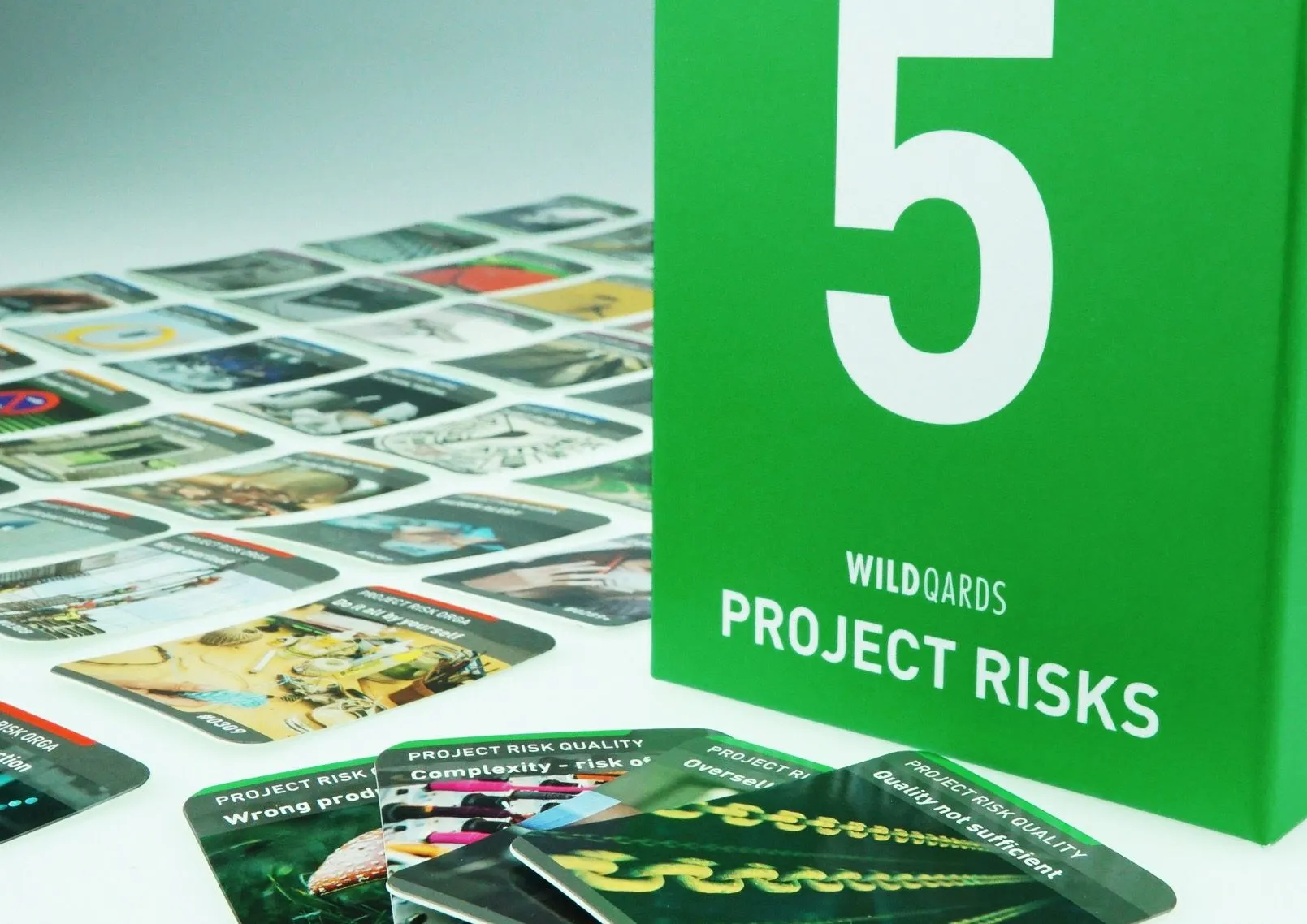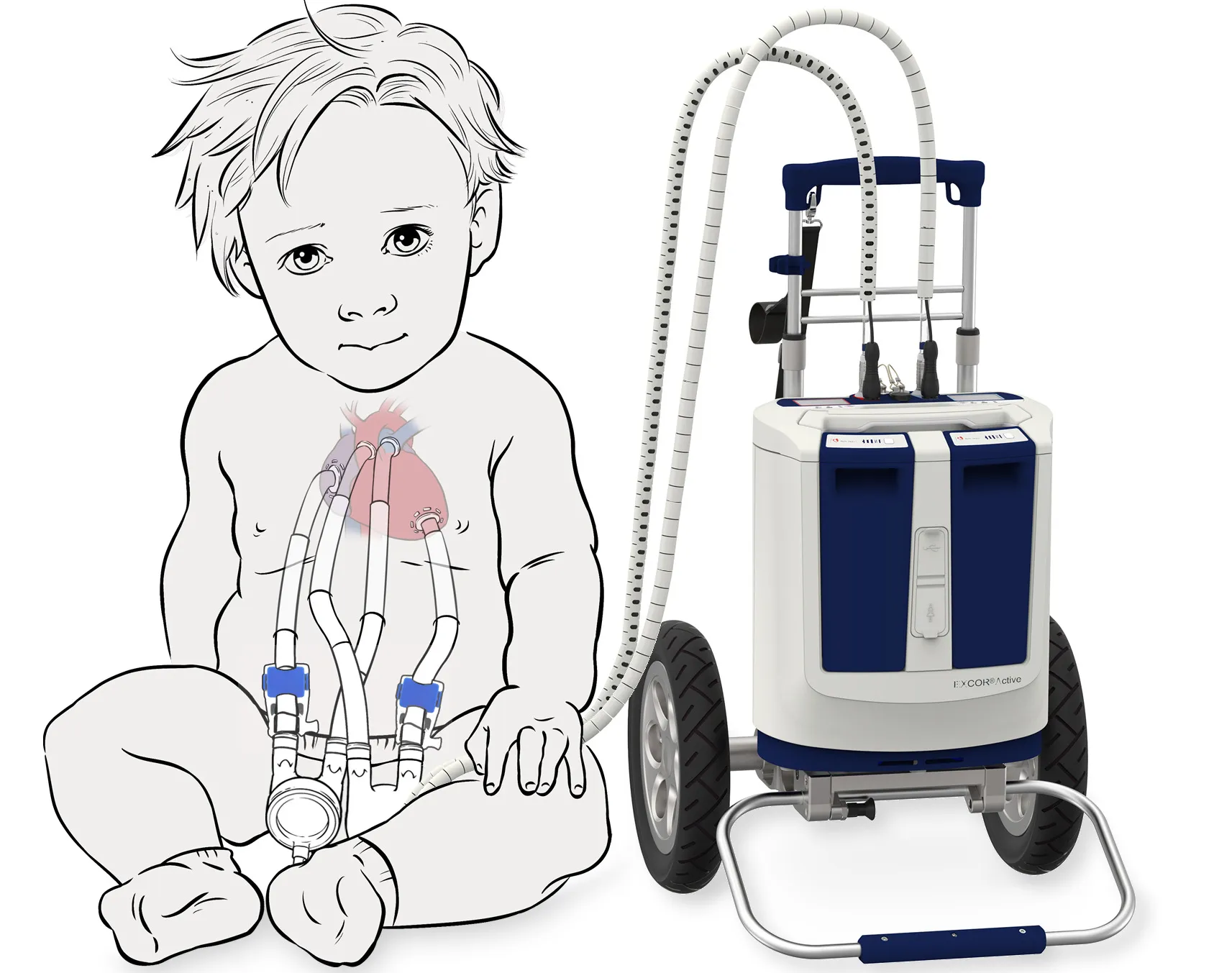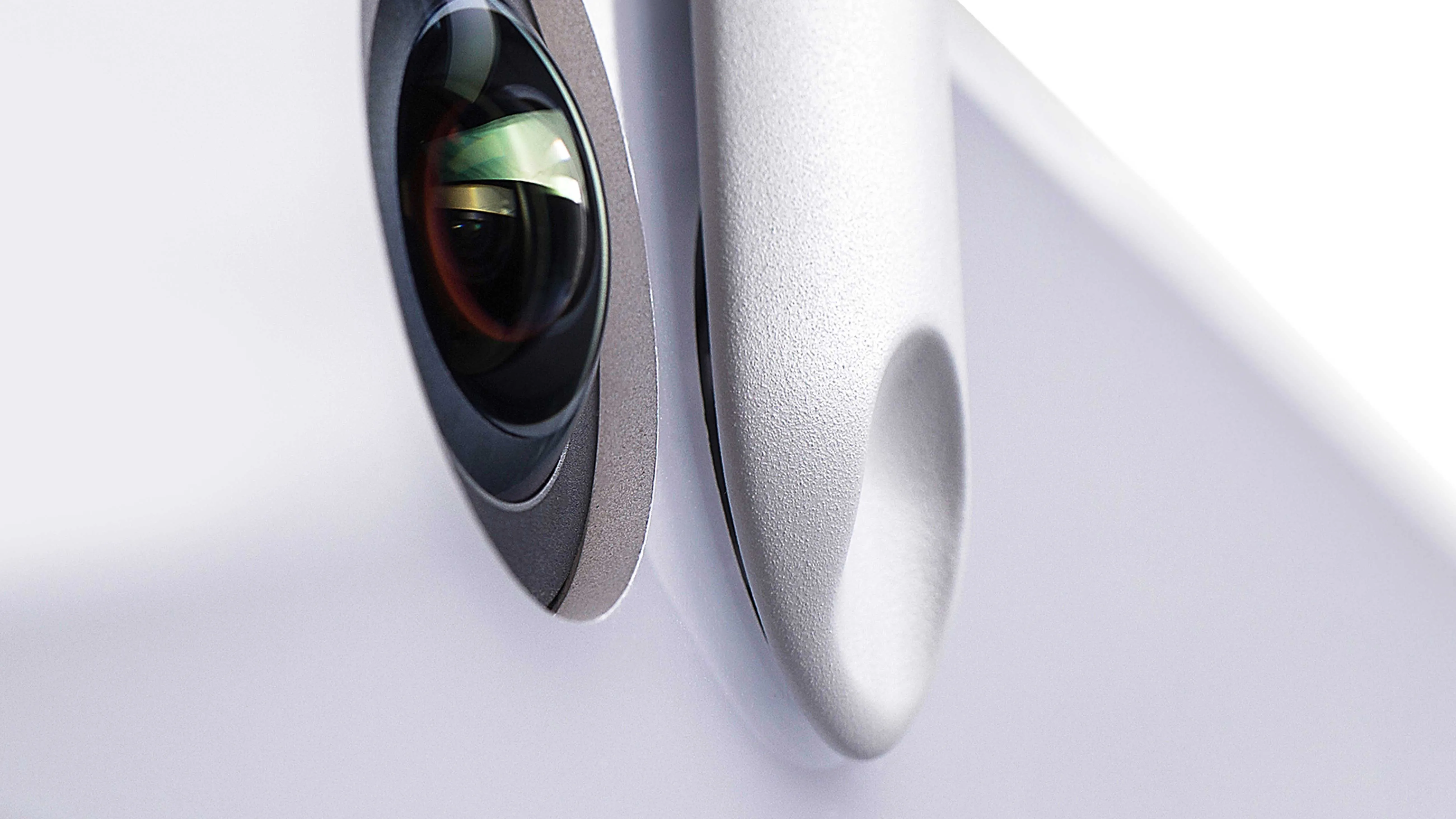Expertise
Mastering project risks - WILDQARDS No. 5
The WILDQARD Set No. 5 Project Risks is made for managers of design and development projects and contains 64 typical risks that can occur in projects - divided into the categories Timing, Quality, Margin, Legal and Orga. You will recognize many situations from your own practice. We use these WILDQARDS before and during a project and determine the relevant risks that we want to keep an eye on. A crisp team activity that costs no more than 20 minutes, but provides lots of important insights.
When a product is launched on the market, the focus of communication is first and foremost on performance and success. Nobody talks about problems that may have arisen during the course of the project. But you know: problems are simply part of everyday project life. And they are not necessarily new problems that you encounter again and again in the course of projects. Time constraints and poor communication, for example, are classics. In order to avoid running into the open knife every time, we always transfer our experience and knowledge to new projects. In doing so, we create a knowledge pool of best practice examples and project management heuristics that not only help to prevent the worst, but also offer valuable suggestions.
Vital in medical design
Perhaps we have a greater affinity for risk management as we mainly work in the field of medical design. There, risk management is one of the legally prescribed measures to prevent harm to the life and limb of users and patients. We started recording risks and problems that we frequently encountered decades ago. "Pain makes you wise" is a valid saying, but not really applicable to a professional service. Not every individual in the team can enjoy this way of learning. That's why there's no way around it, you have to capture the findings somehow.
However, large amounts of text can quickly become overwhelming and boring, which is why we have initially summarized the individual risks in checklist form. However, this exercise is rather dry and when looking through it, there is often a lack of concentration to actually imagine the risks and their effects. However, when we did this exercise as a team, we noticed that discussing possible risks not only released more motivation, but also regularly gave us new ideas and perspectives.
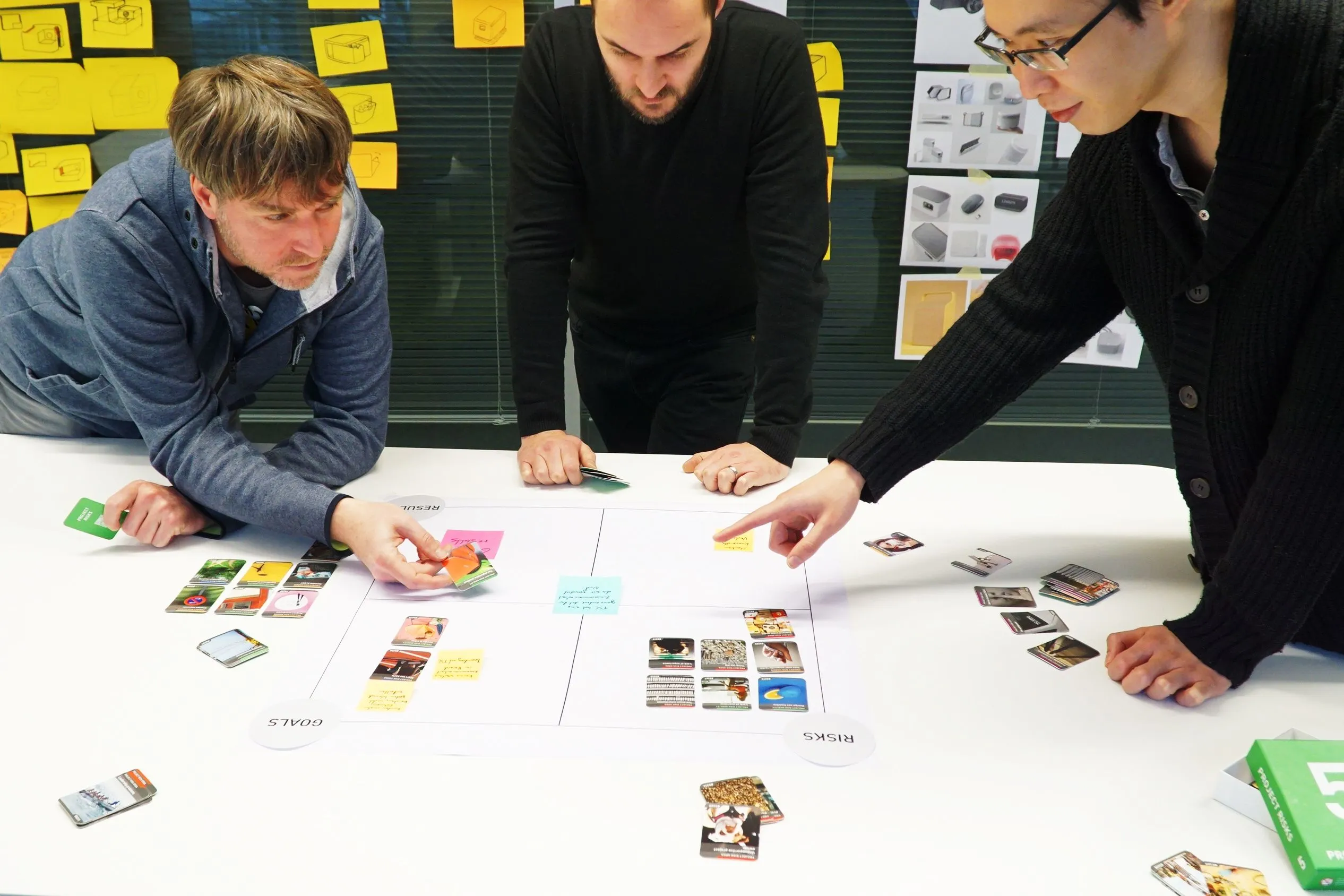
The optimal shape = small cards
The solution? A set of cards that encourages playful use and that we use interactively. Method cards are nothing new in the creative sector and are used in a variety of ways. The first draft was a large-format, rather unwieldy set of cards with pictures, titles and further information in text form on the back of the cards. Later on, we drastically reduced both the size of the cards and the information on them.
Now each of the 64 cards fits on the palm of one hand so that all the cards can be laid out next to each other on the table. The WILDQARDS convey their message using just four elements: topic, category, headline and image. The ingenious combination of text and images on the cards makes you think and sometimes even smile. The omission of information leaves room for your own associations and anecdotes. Instead of a lot of text, there is now a QR code on the back that leads to the card's corresponding website. Here you will find a brief description of the risk and possible countermeasures.
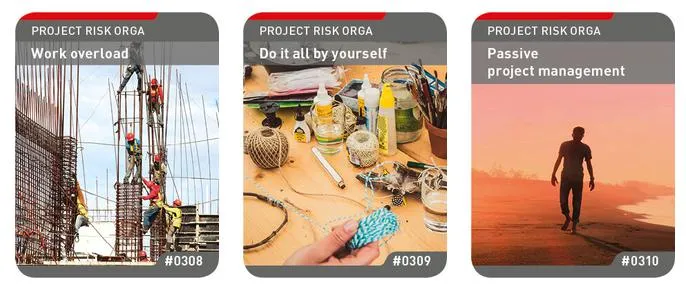
Especially in the initial phase of a project, the WILDQARDS help you to get a bird's eye view more easily. In a small team or on your own, you can go through the cards, discuss and sort out which risks are relevant for a project. 64 cards are a large number, so a clear selection is necessary. We recommend laying them out on a positioning cross.
Divided into the fields of risks, problems, goals and results, you can move and arrange the WILDQARDS according to their relevance. Discussing possible sources of error regularly leads to new strategies that help to avoid them. But even after a project has been completed, a look at the initial considerations can be informative in order to recapitulate: Which risks really materialized? Did the countermeasures work?
Is this also available "in digital"?
Due to COVID-19, it is currently difficult to use the haptics of the cards in the team. In addition, general digitalization is shifting the value of tangible work materials to digital. We use the WILDQARDS on the virtual whiteboard MURAL so that we can also hold the discussion digitally. Here, too, you can lay them out, move them around and add digital post-its with further suggestions, measures or notes.
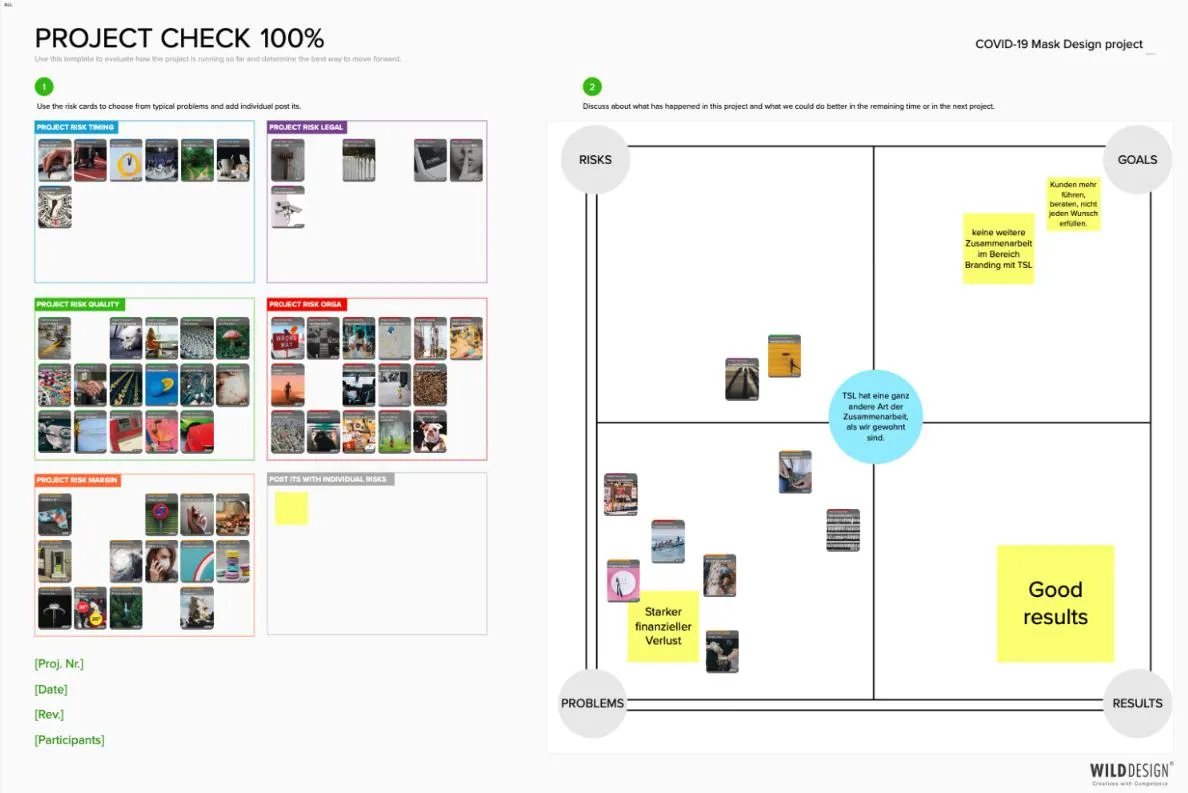
WILDQARDS: our condensed experience in an easy-to-share format!
We would now like to share this accumulated knowledge with you in the form of the WILDQARDS No. 5 Project risks and thus save other companies from making mistakes. Because we like the format so much, we are already working on further WILDQARD sets and testing them in our current projects.
The first three sets are based on the megatrend map from the futureInstitute were developed. The WILDQARD Set 9 Design Principles can be used to examine in more detail which specific design principles are more or less relevant for a project. Needs and Values (WILDQARDS No.16) are based on Maslow's pyramid of needs. As the name suggests, it is about the needs and values that need to be considered in a design project. Just like the project risks, all WILDQARDS are structured according to the same principle: 64 cards on one topic, consisting of the four elements topic, category, headline and image.
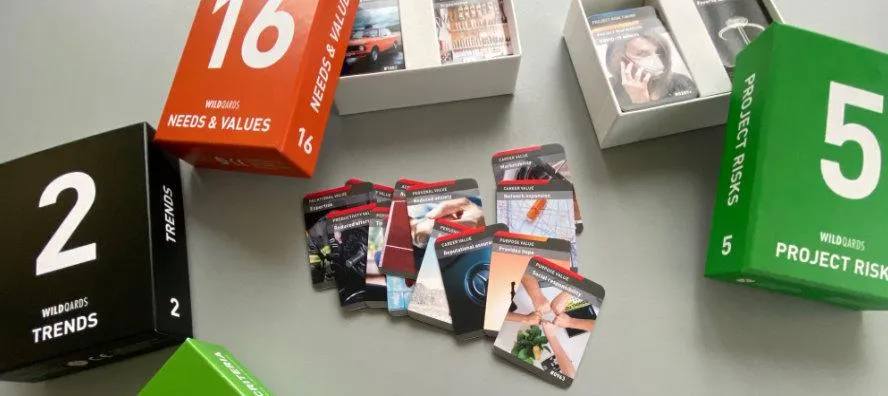
04 Tips from the expert
- Encourage team discussions about risks before the project starts
Discuss possible project risks in the team before the project starts in order to gather different perspectives and develop countermeasures at an early stage. - Prioritize the risks and focus on a few
Identify the most important risks and focus on the few that could have the greatest impact on your project. - Reflect together at the end of the project
At the end of the project, analyze which risks occurred and how effective your measures were in order to learn for future projects. - Use the WILDQARDS for creative risk scanning
Use the WILDQARD card set to identify and discuss typical project risks. Request the card set directly from us!
Frequently asked questions


